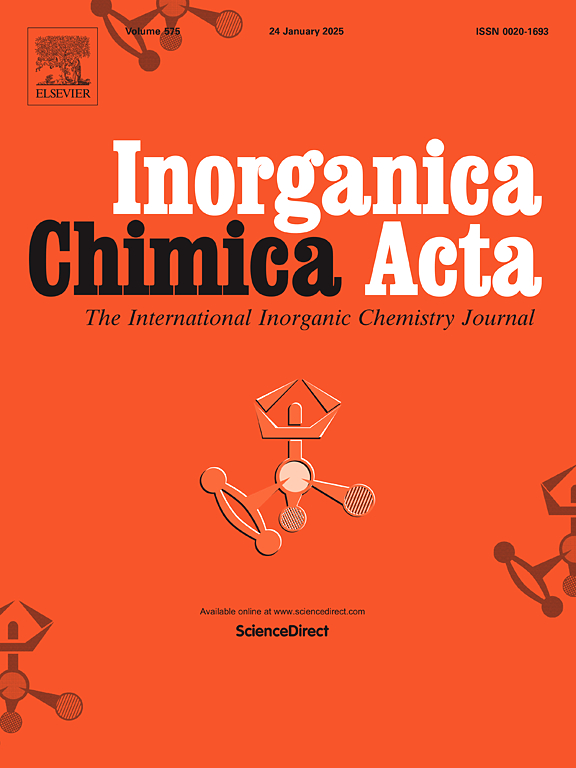New positional isomeric homoleptic Ni(II) dithiolate anions as molecular homogeneous electrocatalysts for hydrogen evolution reaction
IF 2.7
3区 化学
Q2 CHEMISTRY, INORGANIC & NUCLEAR
引用次数: 0
Abstract
Three new Ni(II) based positional isomeric homoleptic dithiolate complex anions with general formula [Et4N]2[NiL2] (L = 2-methoxyphenylacetonitriledithiolate (Ni-o-OMe); 3-methoxyphenylacetonitriledithiolate (Ni-m-OMe) and 4-methoxyphenylacetonitriledithiolate (Ni-p-OMe) have been synthesized and characterized by microanalysis and spectroscopic techniques such as FT-IR, UV–Vis., 1H, and 13C NMR. The geometry optimization of these complex anions suggest that, the immediate geometry around Ni(II) is distorted square planar which is satisfied by four sulfur centers of two dinegative dithiolate anions. These complex anions have been used as homogeneous electrocatalysts for hydrogen evolution reactions using trifluoroacetic acid (TFA) as a proton source. The electrocatalysis investigation reveals that Ni-o-OMe, Ni-m-OMe and Ni-p-OMe exhibited a turnover frequency (TOF) of 199, 242 and 450 s−1, with overpotentials (η) of 0.799, 0.763 and 0.710 V, respectively, on adding 115 mM TFA. Thus, Ni-p-OMe with the highest TOF and least η, shows the best electrocatalytic activity. The observed variation in electrocatalytic properties of these isomeric complex anions have been explained by employing theoretical studies which reveals that, Ni-p-OMe possess a larger HOMO-LUMO energy gap compared to other isomeric complexes. This suggests that it is relatively more stable and hence offers better electrocatalytic properties than other two isomers. Furthermore, the planar architecture of Ni-p-OMe and existence of p-OMe group could have easily facilitated better electron communication, thereby elevating its electrocatalytic performance.

求助全文
约1分钟内获得全文
求助全文
来源期刊

Inorganica Chimica Acta
化学-无机化学与核化学
CiteScore
6.00
自引率
3.60%
发文量
440
审稿时长
35 days
期刊介绍:
Inorganica Chimica Acta is an established international forum for all aspects of advanced Inorganic Chemistry. Original papers of high scientific level and interest are published in the form of Articles and Reviews.
Topics covered include:
• chemistry of the main group elements and the d- and f-block metals, including the synthesis, characterization and reactivity of coordination, organometallic, biomimetic, supramolecular coordination compounds, including associated computational studies;
• synthesis, physico-chemical properties, applications of molecule-based nano-scaled clusters and nanomaterials designed using the principles of coordination chemistry, as well as coordination polymers (CPs), metal-organic frameworks (MOFs), metal-organic polyhedra (MPOs);
• reaction mechanisms and physico-chemical investigations computational studies of metalloenzymes and their models;
• applications of inorganic compounds, metallodrugs and molecule-based materials.
Papers composed primarily of structural reports will typically not be considered for publication.
 求助内容:
求助内容: 应助结果提醒方式:
应助结果提醒方式:


